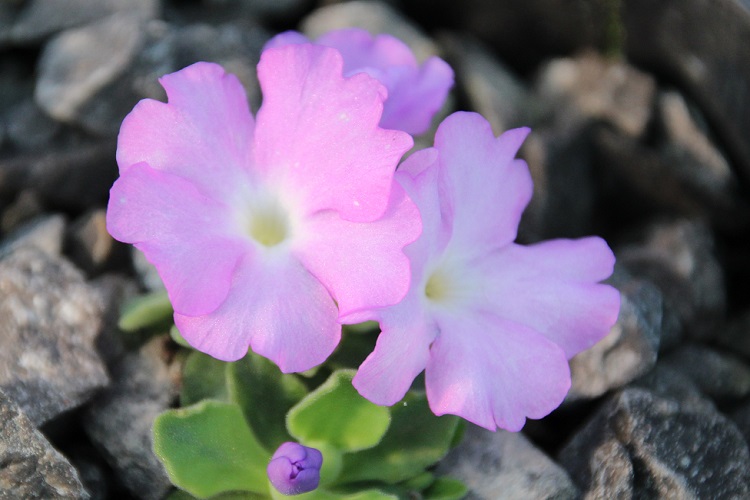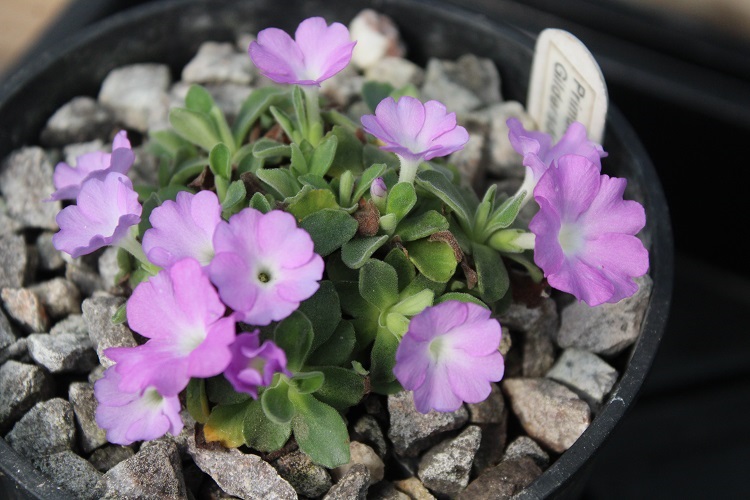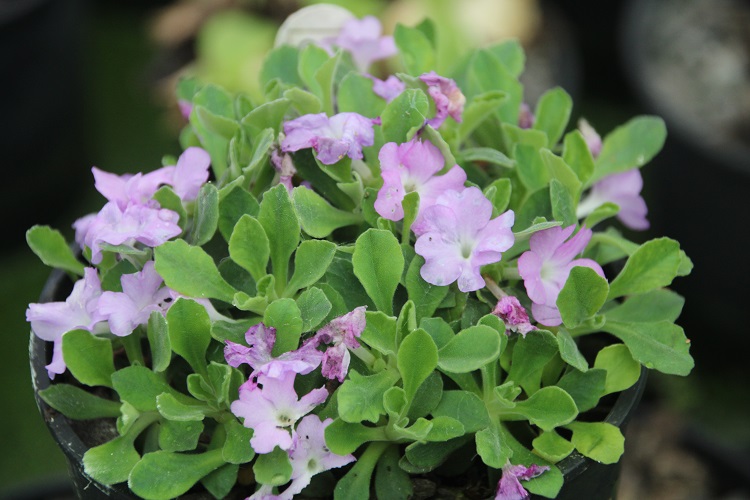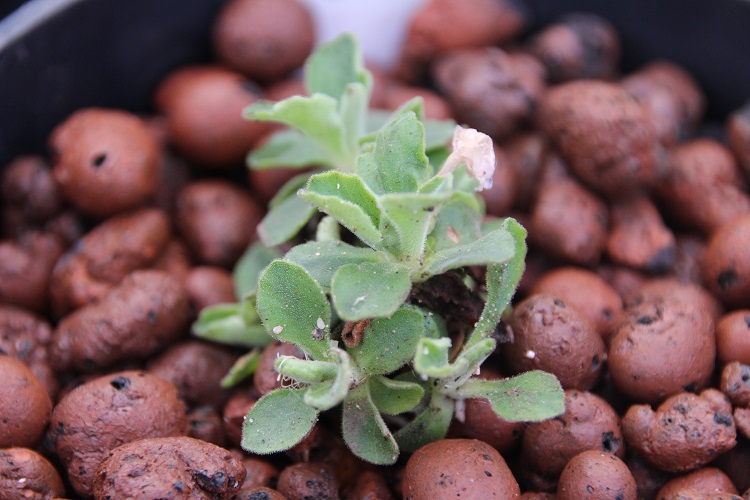 |
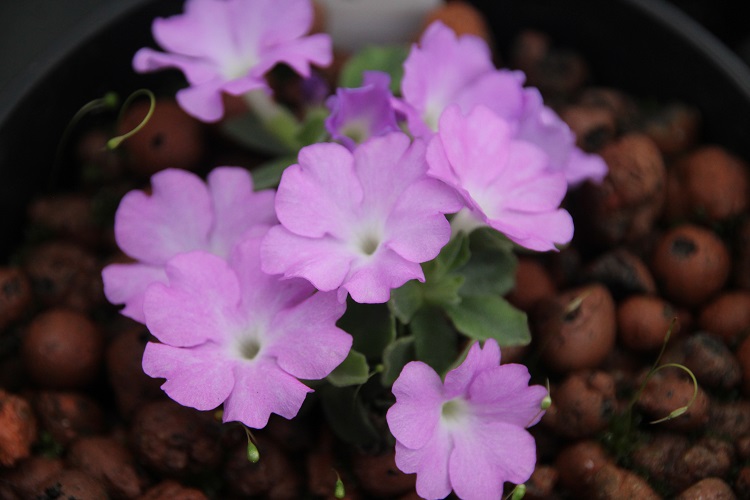 |
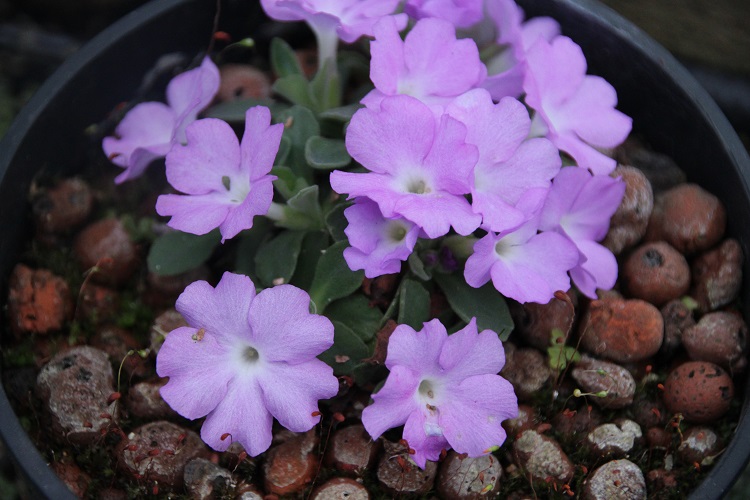 |
| 1st May 2016 | 9th March 2017 | 22nd March 2018 |
|
A vigorous plant that has done well for me. I bought it from the members table at an AGS show in 2016.
It was given an Award of Merit when shown at Stirling show in 1996. In the write-up, Betty Craig, the exhibitor says: "Distributed for a decade or more with the unmemorable tag 'Hartside no.12', this vigorous and often floriferous clone has now been named 'Gilderdale Glow', following consultation with Neil Huntley, proprietor of Hartside Nursery Garden, Cumbria, where the plant originated. In 1973, seed from spontaneously pollinated stock plants of P. allionii was sown, resulting in sixteen seedlings, of which three were felt to be worth naming; viz. 383/1 ('Tranquility'), 383/3 (the award plant) and 383/7 ('Pennine Pink'). P.a. 'Gilderdale Glow' is a fairly pale selection of the species; the violet buds opening to form delicate lilac pink flowers c. 20 mm in diameter, the petals notched to a third the depth of the limb and their lobes overlapping. This is a pin-eyed clone, the throat bleaching gradually to white, presenting a pale, starry-eyed appearance. In full flower, it is difficult to see the foliage; the leaves, once sighted, are fairly typical of a 'standard' P. allionii, being spathulate, 15-20 x 5-9 mm and their margins slightly toothed. Each rosette carries 1-3 flowers, the quatity depending on the standard of cultivation. It has proved reliable an trouble free under alpine house conditions, so that the small plant I obtained thirteen years ago has now reached 25 cm in diameter; the greatest difficulty now is that the pot is almost too heavy for me to lift. Potting has been carried out 'on demand', using a compost made up of equal parts John Innes no.2 and coarse grit, with perhaps a little peat or leafmold added, then topdressing with a good layer of 6mm chippings. Water is only applied around the perimeter of the plant, taking pains to avoid wetting the foliage; when the primula is in full growth, a pinch of Phostrogen is occasionally put in the watering can and the resultant solution applied to the plant. If surrounded by a damp sand plunge, little additional watering is necessary over the winter months." (Apologies for quoting it all, but it is such a good account). |
||
